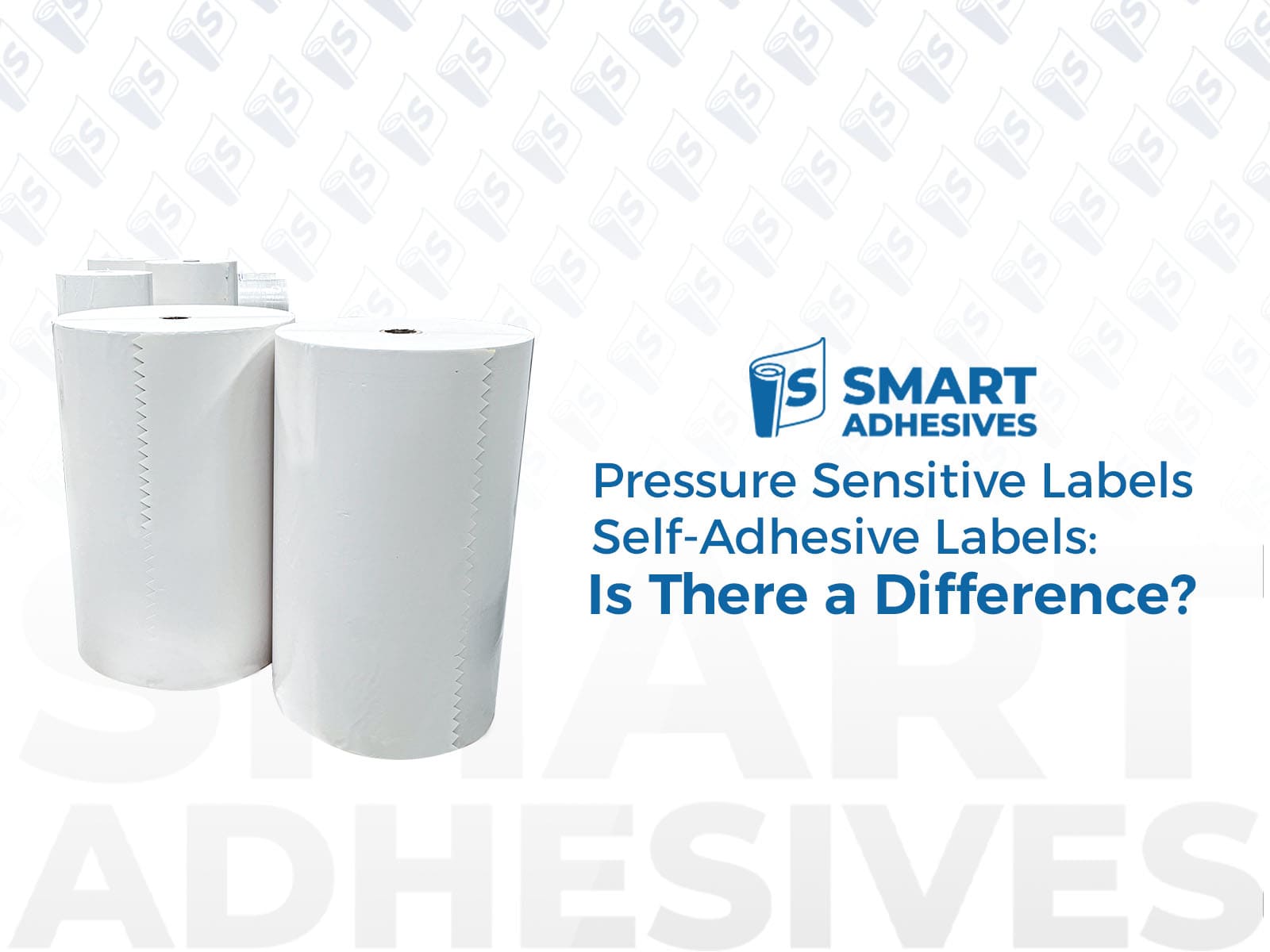Smart Adhesives - Official Site
Pressure Sensitive Labels vs. Self-Adhesive Labels: Is There a Difference?

What’s the difference between pressure-sensitive labels (PSL) and self-adhesive labels? Nothing. They use the same construction and application method, although these names are often confused with other types of labels. Why does the same label go under two names, and what makes them so popular?
The Development of Pressure-Sensitive Adhesive Labels
Pre-applied adhesive labels have been around since the middle of the 19th century. However, these early labels required something to activate the glue. For example, when you lick an envelope to seal it. The only pressure-sensitive adhesives on the market were in bandages and dressings. These used a rubber-based glue applied just before application and had a limited working life.
Pressure-sensitive labeling really came into its own with the introduction of acrylates. While there are other pressure-sensitive glues on the market, there are few tacky options that do not need additives. Cutting out additives doesn’t just make these glues cost-effective to manufacture; it also limits or eliminates problems with migration, changes in strength, and allergic reactions. Acrylates are also highly resistant to oxidation and exposure to chemicals and light. With some modifications, they can resist extreme temperatures and exposure to petroleum products. This versatility has helped self-adhesive labels become the most popular technology used for commercial product labeling.
What Makes These Labels Stick — and What Does Pressure Have To Do With It?
Adhesives are broadly classified as structural or pressure-sensitive. Structural adhesives change chemically to stick to substances. The trigger could be the evaporation of solvents, UV radiation, direct chemical reactions, or temperature changes.
Pressure-sensitive adhesives can best be described as flexible solids. When they’re applied to a container, they flow across the surface. However, once applied, they won’t flow enough to peel off. In a way, they act like Lego bricks. While they flex enough to easily snap together, it takes more effort to separate them.
Why Use Two Terms for the Same Label?
It comes down to how you look at the application. Despite the separation between consumer and commercial use, all of them use similar construction within label materials, from the label stock to the face stock. The top coats may differ due to variations in the label printing process between home and commercial uses. Home label making usually doesn’t involve elaborate digital printing, embossing, or laminating.
If you’re looking at these labels from a consumer standpoint, you’re focused on a one-off application method. If you grab a roll of tape or an address label (like the die-cut labels from your inkjet printer), you can slap it on without thinking about glues or drying time. Avery marketed his first labels as “self-adhesive” to emphasize this ease of use. Look at labels marketed to office and home users; you’ll see this term used on them.
If you’re looking at these labels from a manufacturing standpoint, you’re focused on the application method and how it fits your production system. With these labels, you don’t need a heat source, nor do you need to worry about application and drying times. When you choose to use these labels, the biggest concern is pressure. There are several application methods to consider, as well as ways to prevent flagging, bubbling, and skewing. This is why commercial labels are called “pressure sensitive.”

